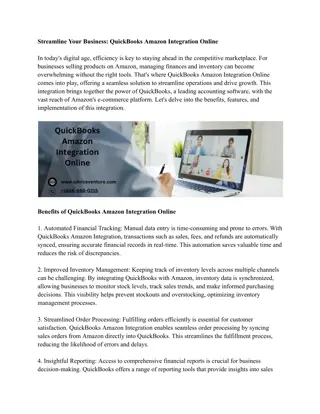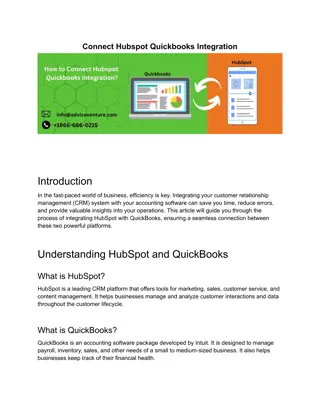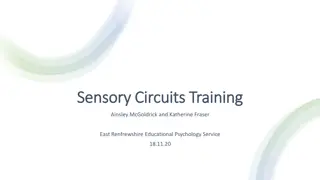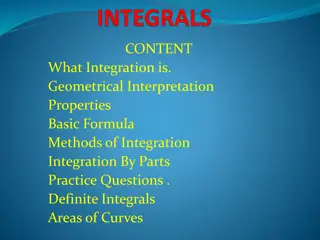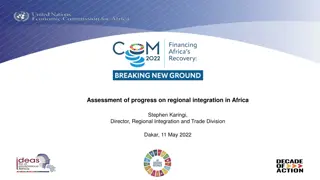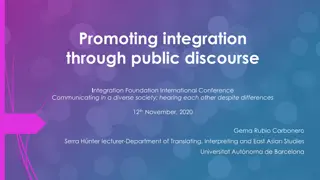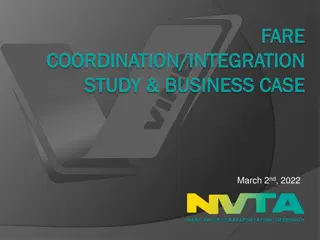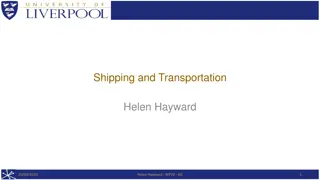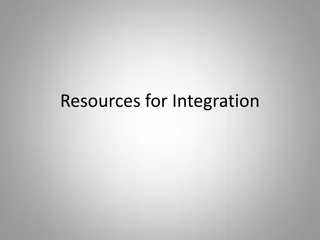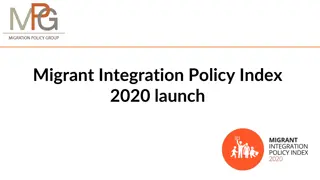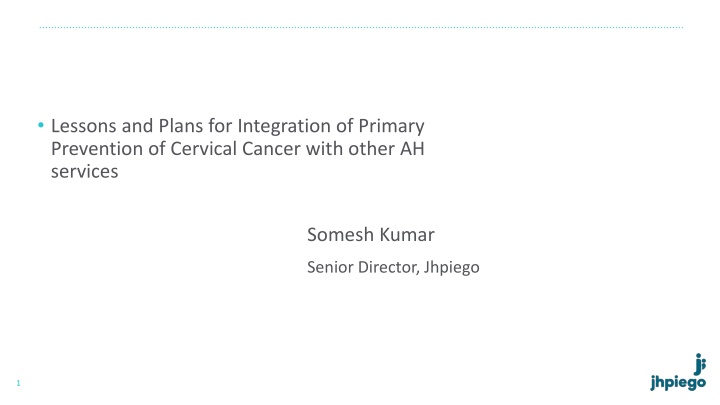
Integration of Primary Prevention of Cervical Cancer: Lessons and Challenges
Learn about the integration of primary prevention of cervical cancer with other adolescent health services, including important lessons learned and challenges faced. Discover practical solutions for effective HPV vaccination and service delivery for adolescents.
Download Presentation

Please find below an Image/Link to download the presentation.
The content on the website is provided AS IS for your information and personal use only. It may not be sold, licensed, or shared on other websites without obtaining consent from the author. If you encounter any issues during the download, it is possible that the publisher has removed the file from their server.
You are allowed to download the files provided on this website for personal or commercial use, subject to the condition that they are used lawfully. All files are the property of their respective owners.
The content on the website is provided AS IS for your information and personal use only. It may not be sold, licensed, or shared on other websites without obtaining consent from the author.
E N D
Presentation Transcript
Lessons and Plans for Integration of Primary Prevention of Cervical Cancer with other AH services Somesh Kumar Senior Director, Jhpiego 1
What and Why.. Serving adolescents rather than running programs HPV vaccination and other adolescent health services are offered by one provider, at one site, at one time, so that they look like one service Seeking practical solutions to effective HPV vaccination and other service delivery for adolescents 2
Important lessons learned Integration isn t the answer for inadequate resources. Supporting integrated services does not mean that everything has to be integrated into one package. There are many more examples of policies in favor of integrated services than examples of actual implementation. 3
Challenges to integration Policy, Siloed Structure and guidelines Client perspective: prefer to have the services they want, do not understand the importance of other services Longer client waiting times Increased resource needs (staff, space, supplied, equipment) Needs well-designed services and client flow 4
Lessons learned on integration from 1st year of implementation/learning tours Promote communication and convergence between departments of EPI , school & AH programs, HIV/AIDS, NCDs, Education Include HPV in school sexual health curricula Identify ways to integrate HPV information or HPV vaccination into HIV care for HIV positive girls Identify possibilities of integrating information about HPV vaccination into other social mobilization activities/ community structures Convergence of primary and secondary prevention for Cervical Cancer as an integrated plan for Cervical Cancer Prevention 5
HPV Plus: 14 health-related interventions for delivery in conjunction with the HPV vaccine Screening (vision), Health education (on mosquito-borne diseases, the benefits of exercise, accessing health care, and sexual and reproductive health, menstrual hygience), Relevant Skills (improving condom usage, hand washing) Delivery of commodities (anthelminthic drugs, vitamin A supplements, soap and/or bed nets) 6
Plans for integration: Tanzania Map available adolescent health services, including data on adolescents in the area Assess unmet need for specific health services Identify and address barriers to integration of services Co-create with the adolescents, parents, teachers, community members on ideas for integration of HPV vaccine into other health services Co-design, with other departments, approaches for integrating HPV vaccination into other service delivery platforms and vice versa Develop a detailed plan for integration ensuring continuing engagement of key stakeholders 7
Human-Centered Design Workshop 3-day co- design workshop. Engaged adolescent girls, parents, program managers, clinicians, nurses, social welfare scientists, education experts, immunization/CECAP/RMNCH/ASRH/HIV experts, teachers Brainstorm potential solutions to HPV vaccination integration. Present prototype, gather feedback, iterate. Developed a deep understanding of needs and challenges of adolescent girls. Design low-fidelity models of selected integration solution. Refined the problem to be solved (eg. What specific needs and barriers are we to address?) 8
Integration Thematic Areas The five themes of integration How might we integrate HPV vaccination and HIV services (to ensure HIV+ adolescent girls receive the requisite three doses)? with other adolescent sexual and reproductive health services? into the already existing school health program? into BCC messaging? with CECAP programming? 9
Next Steps: Test and Pilot! In early October, held a workshop with key stakeholders to further test and refine the integration models. Next: work with MOH to pilot test integration strategies at three facilities each in Dodoma and Dar es Salaam. Train health care providers on delivery of integrated strategies. PILOT! Partner with IVAC (International Vaccine Access Center) at Johns Hopkins, to evaluate feasibility, acceptability and sustainability of piloted integration models. 10

